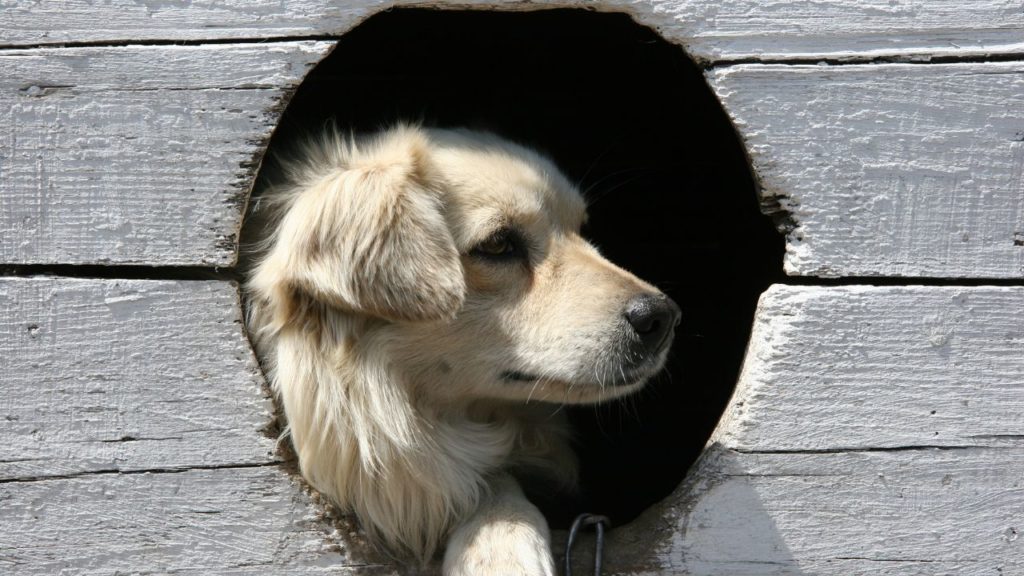
Dogs can be a lot of work, and they need to be taken care of just like any other family member. One way to keep your dog healthy is by providing them with an appropriate kennel that will give them space for sleeping, playing, and even getting some exercise. However, when it comes to sizing up your pup’s new home, there are a few things you should consider before making a purchase.
First off, iIs My Dog’s Kennel Too Small? For example, if you have a German Shepherd at full height- measuring from flooring to ears – he may not fit in his available enclosure! Dogs must have enough room to not feel cramped or claustrophobic during their stay.
How Big Should Your Dog’s Crate Be?
If you have a large breed, you should consider going with a kennel that is at least 50% bigger in length and width than your dog. Here’s a handy guide to help you find the exact kennel for your pooch:
Remember that it isn’t always necessary to purchase a larger home if many canines share a kennel. For example, if you have a toy dog and a Great Dane, both dogs should be able to fit into a large crate as long as they aren’t too crowded during sleep time.
Made and Material Also Matters
A second factor to consider is the material of the kennel itself. Metal cages can get very hot in the summer and very cold in the winter.
If you are purchasing a metal kennel, make sure to place it in a shady area or, if possible, drill some small holes into the bottom of the crate or purchase sandbags that fit snugly at the bottom corners of the door.
These sandbags help regulate temperature by allowing airflow beneath your pet’s home. Plastic crates also come with their own advantages and disadvantages.
They don’t get as hot in the sun, but they can cause your dog to overheat without proper ventilation or air conditioning during warmer months.
When purchasing a kennel, one last thing to keep in mind is that if your pooch has never been created before, you will need to take precautions as they may not know how to behave when confined.
An anxious dog can damage his crate, so be sure to purchase a chew-proof kennel or use a strap and buckle-type door closure.
Should Dogs Be Able To Stretch In Crate?
You don’t want your dog to feel cramped in his home, so be sure he has enough space to lie down at full length. Of course, this will depend on the size of your dog and the size of the kennel you purchase, but most dogs should have ample room to stretch out.
Another way around this is by getting a wire kennel with removable dividers so you can adjust the height of the kennel to your dog’s size.
If you have a large breed with a short coat, you can also purchase a kennel that is two feet high. This will make it easier for your dog to stand up and sit down without bumping his head on the ceiling.
As far as playtime goes, most dogs don’t need much space in their home to fit in a comfortable bed or play-pen.
If you are providing your dog with his own room, be sure to line the kennel floor with newspaper before letting him have free time in it so you can better monitor where he is relieving himself.
Overall, dogs that live in crates for long periods of time will need at least 32 inches of space in their home.
If this is too big or small for your dog, be sure to adjust the size of your pooch’s kennel accordingly, so he doesn’t feel crowded while inside his new home.
When Should I Increase My Dog’s Crate Size??
When it comes to increasing the size of your dog’s kennel, it varies depending on your breed. If you have a puppy that is quickly growing into an adult, be sure to purchase a crate that will accommodate him as he gets bigger.
Some dogs grow more than others, so keep an eye out for any changes in behavior that include: not eating, uncharacteristic chewing, and anxiety.
If you find that your dog is experiencing any of these symptoms, immediately increase the size of his kennel by one or two crates so he can get used to a larger space.
Should I Increase Dog’s Crate Size Gradually?
This depends on how comfortable your dog is in his kennel, to begin with. If he has never been crated before, it may take a while for him to get used to the idea of staying in one spot for an extended period of time.
In this situation, it would be best to gradually increase crate size over a few months so that he will have been trained to stay in a smaller space by the end of the adjustment period.
However, if you have a dog that is already crate-trained and has no problems with staying inside his home for 8 hours at a time, there is no reason why you can’t increase it immediately.
Can A Crate Be Too Big For A Dog?
A dog that is caged for most of the day can quickly become destructive if it is not properly trained to behave when confined indoors.
In this case, it would be best to purchase a kennel just big enough for him to move around in comfortably and attach the door with a buckle or strap closure.
Just remember that a kennel should be the dog’s special “den” and not a place where they can entertain themselves all day.
Make your dog’s home as inviting as possible by placing his favorite blanket or toy in the back of it, but make sure you don’t let him have too much free time in his new home.
Once your dog adapts to his kennel, you can slowly increase the size every few months until he is completely comfortable staying in it all day long.
Is A Crate Training Journey Right For My Dog?
If you are apprehensive about crate training your dog, it is best to start by slowly increasing the size of his kennel over a period of 9 months.
Once he has adapted to that size, increase it again by one or two crates each month until he fits into the biggest home that would be appropriate for him.
Keep in mind that some dogs will not adapt to a larger kennel and might begin experiencing anxiety or be destructive when left alone.
In this case, a crate training journey is not for your pooch, and you should consider another option, such as a dog walker or doggy daycare near you so he can get the attention he needs during the day.
Is My Dog Kennel Too Small? Understanding Dog Size and Kennel Design
A dog’s kennel is too small when it comes to fitting in with its design. This might occur only when you have a puppy that needs lots of room to move around but can’t fit through the opening of an adult-sized kennel.
In this case, consider purchasing a playpen for your pup to grow into and use the kennel as a house for him to sleep in.
How to Choose a Dog Crate: Important Guidelines for Crate Sizing
When it comes to choosing your dog’s crate, starting with the right size is key. It can be detrimental to your pet if you choose one too small, as he will have no room to move around or even turn around inside of it.
You also want to ensure that there are not any sharp edges on the kennel that could cause your pooch discomfort.
On the other hand, don’t choose one that is too large so your dog can play around inside of it all day long without having to use the bathroom where you want him to. When choosing a kennel, consider these three things:
- 1. The size of your dog, including his proportionally sized body
- 2. Any special needs your dog may have that would require a kennel with more space or less space
- 3. The function of the kennel
Remember that if your pooch has never been crate trained before, it might take him some time to adapt.
Start with an appropriately sized kennel and gradually increase the size every few months if he starts to have problems being confined.
